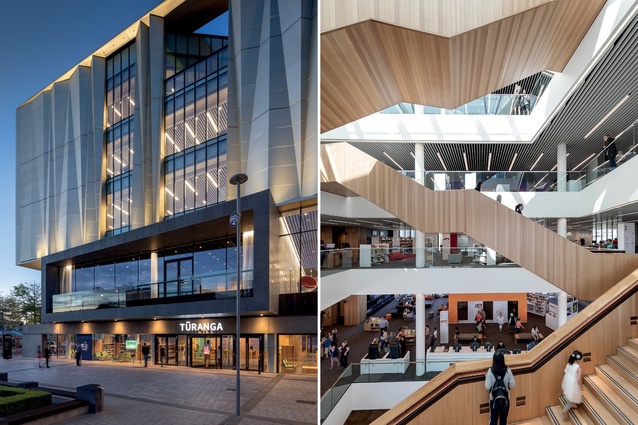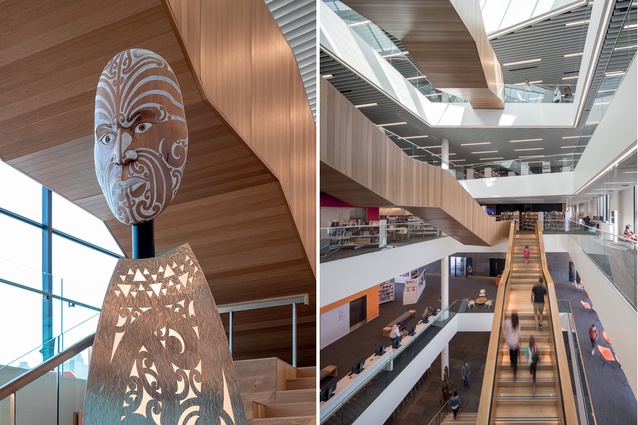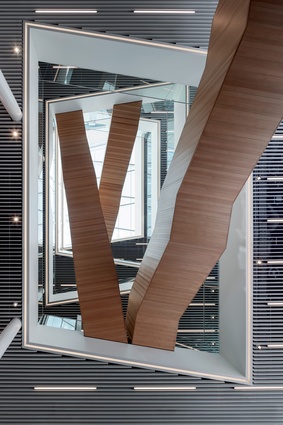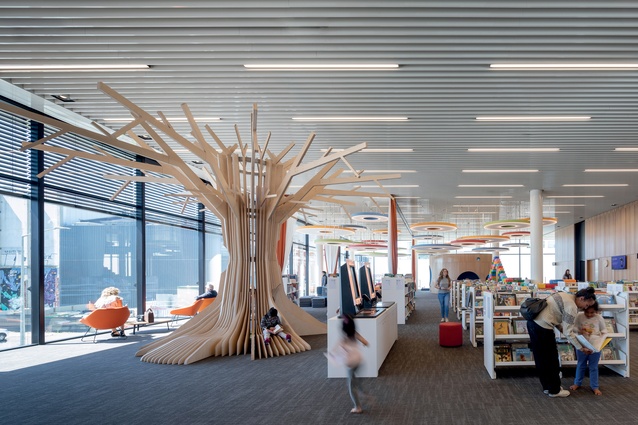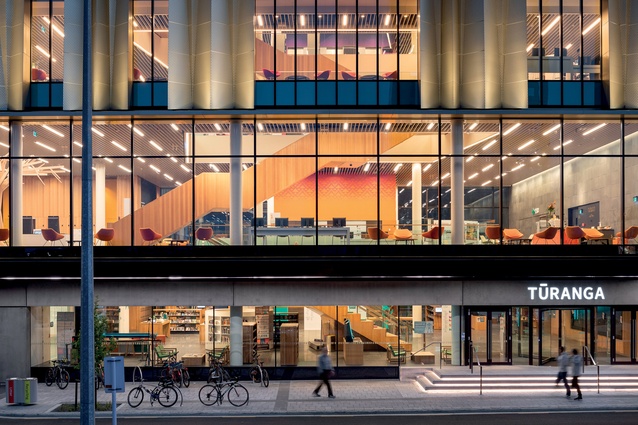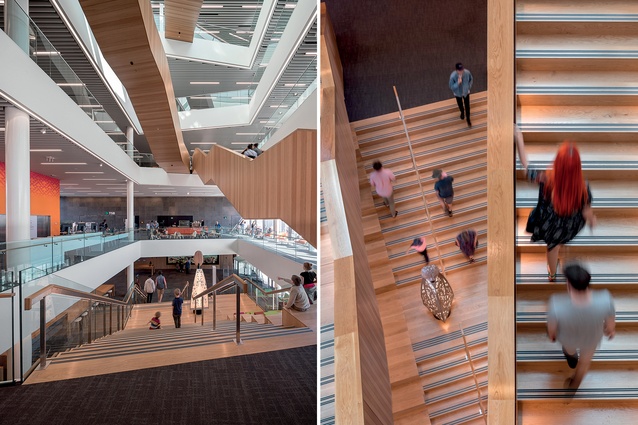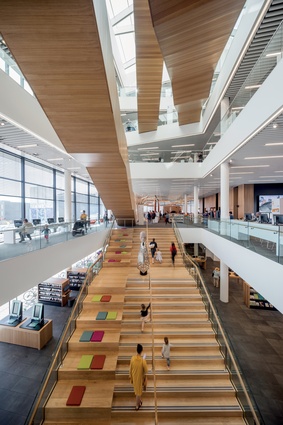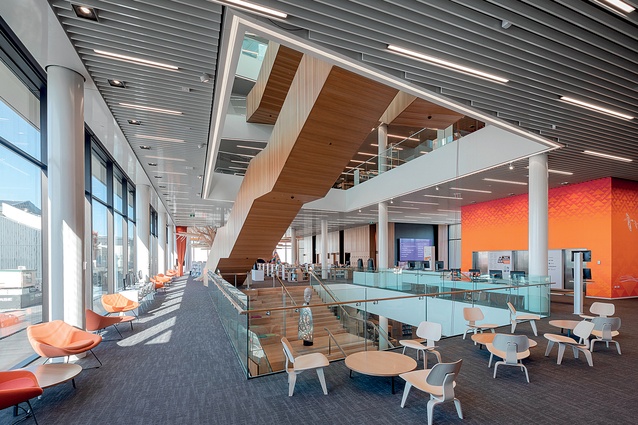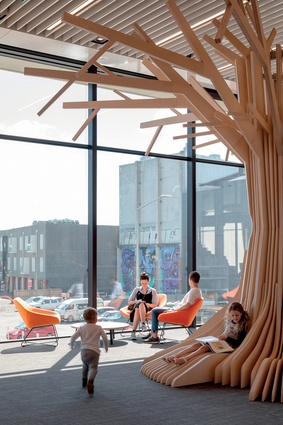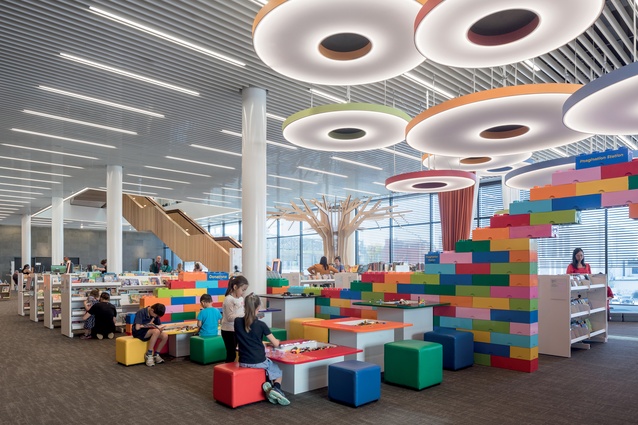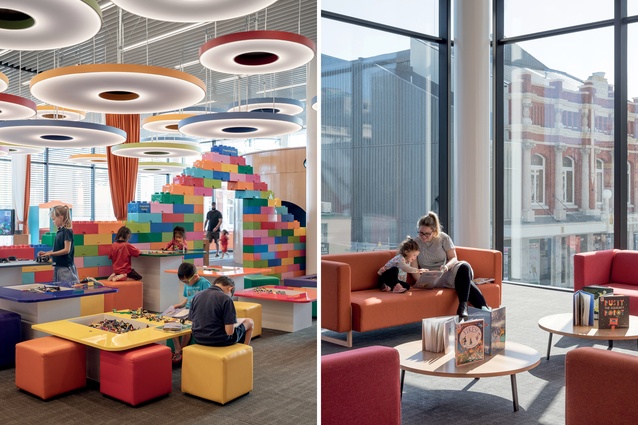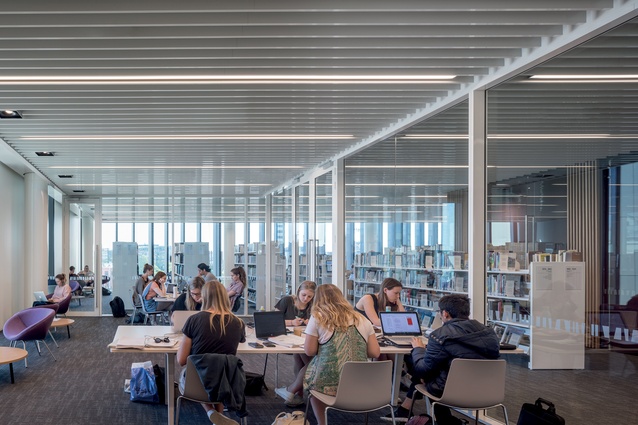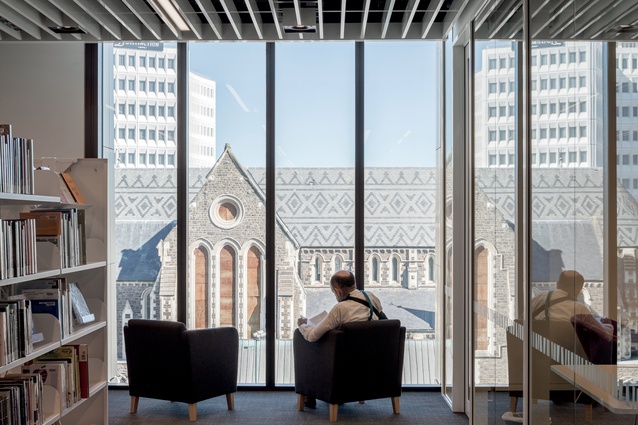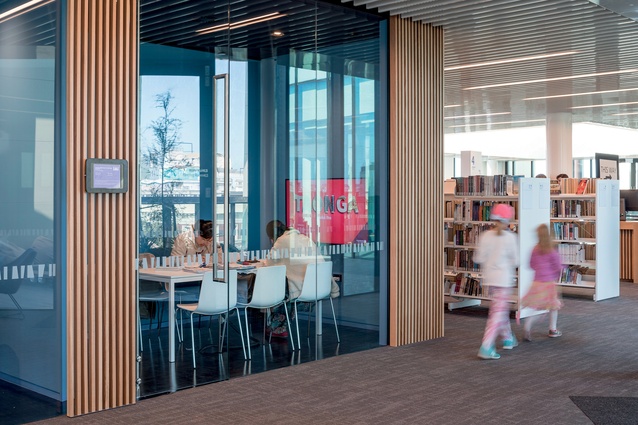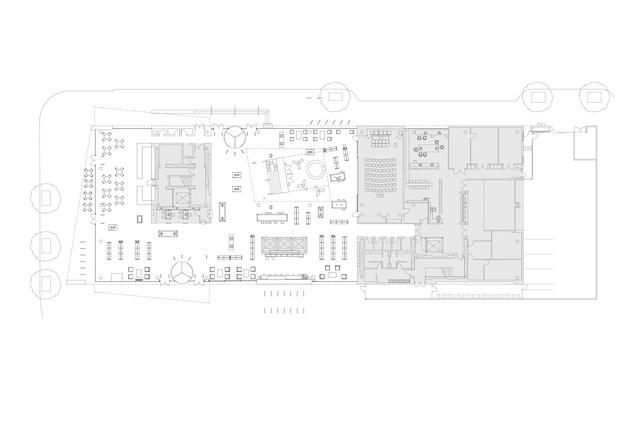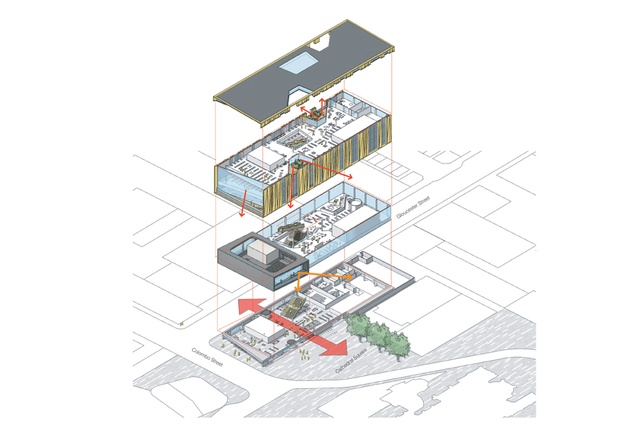The third place: Tūranga
Christchurch’s new central library welcomes all and inspires the pursuit of knowledge.
If you have set foot in a library in the last 20 years, you may have noticed a change. Gone are the shushing librarians, the rows of dusty shelves and the stagnant atmosphere; conversation is now welcome, technology is everywhere and, perhaps strangely to some, books, while still very important, are no longer the sole focus.
The library has become the ‘third place’: a place anyone can go to for whatever reason, be it to study, to research or to seek haven and rest as a parent, traveller or homeless person.
Tūranga, designed locally by Architectus in association with Danish library specialists Schmidt Hammer Lassen Architects, is the new central library in Christchurch, replacing the previous central library, which was rendered beyond repair by the 2011 earthquakes. The old library stood a block away from Tūranga, on a site that will soon host the Christchurch Convention Centre.
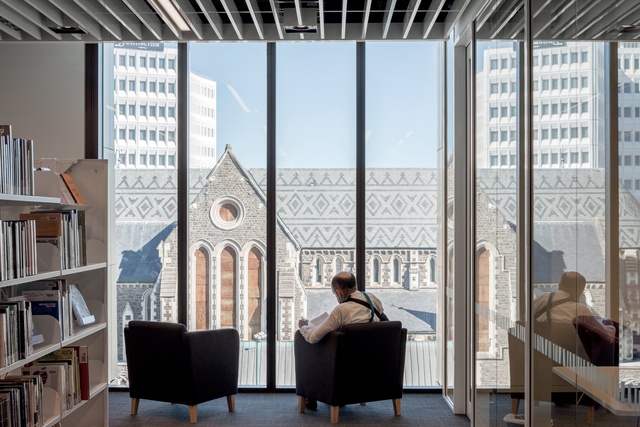
The new location borders Cathedral Square and currently looks across to what remains of the historic Christchurch Cathedral. Placing the library here is a strategic move. It is hoped that it will draw Cantabrians across from the retail precinct on the other side of the square, because, pre-quakes and despite its potential, the square was mostly used by tourists and was perceived by many as a culturally dead zone.
Seen from above, the square is not actually a square but a Maltese cross, and the long rectangle of Tūranga forms part of its outline, explains architect Carsten Auer of Architectus. “The Maltese cross is a heritage-listed feature of the square, which relies on these corners being articulated. The square is the main place for democracy and action in a city. If you want to protest, gather, celebrate – this is where you come.
“We had this in mind when designing the lecture theatre. Instead of having a black box contained within the building, we decided to elevate it to the first level and engage it with the square through a balcony, so the civic space of the library meets with the civic space of the square.”
The first floor of the building has a higher stud than do the other four floors, in order to accentuate its close visual connection to the square and the cathedral. Low-iron glass allows a high degree of clarity through the large areas of glazing on this level.
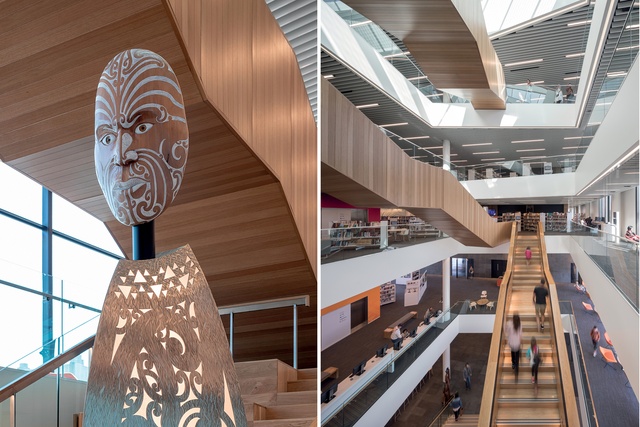
The architects worked with Ngāi Tūāhuriri (a subtribe of Ngāi Tahu) and the local hapū and mana whenua of the area, and also with the Matapopore Trust, which represents the hapū’s interests in partnership with the crown and the council on the rebuild project. A cultural narrative was developed, part of which includes navigational reference points such as Banks Peninsula and Mount Grey.
Two outdoor terraces on the upper floors look out towards these places. “If you overlay the greater geography with the plan for Tūranga, you will see that some of the terraces and subtle shifts in the façade are orienting towards those points,” says Auer. “In some instances, those are implied and, in other areas, they are very literal because you can actually see Mount Grey or Aoraki.”
The façade references the golden hues and folded shadows of the Port Hills, as well as the harakeke that grew in the area previously. The ground level is designed to extend the square, creating a connection through the space to Gloucester Street on the other side.
The idea was to make the library foyer area as welcoming as possible, even to those who may not often frequent libraries, says Christchurch City Libraries Unit Manager Libraries and Information Carolyn Robertson. “We didn’t want people to walk in and see it as a book warehouse so the ground floor had to be as activated as possible. There are entrances on both sides so people can use it as a thoroughfare, but we put tasters of what is going on in this area so they might be tempted to come back later and check it out.”
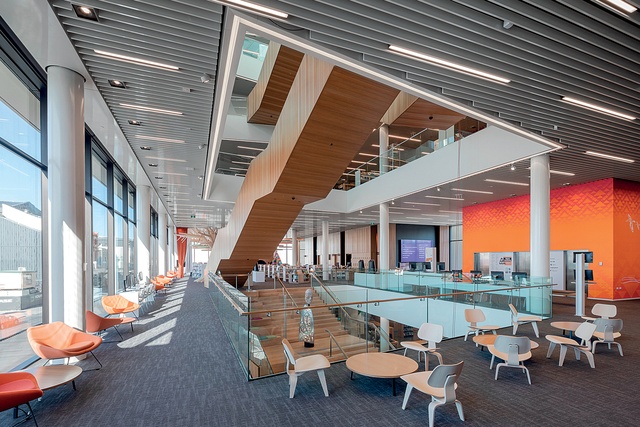
The furniture throughout the library can be moved around. On the ground floor, this is particularly important for events such as pōwhiri, which may occur in the square. Sliding doors across the square façade can create a wide opening for such events.
Unlike many buildings in the Christchurch rebuild, Tūranga doesn’t have cross-bracing; this allows for a sense of transparency and connection between spaces. Instead, the building is seismically protected through the use of two cores, which have rocking shear walls with post-tension, so they are pulled to the ground and this limits the rocking in an earthquake.
Above the foyer, the stairs cross over at angles designed to draw visitors to the upper floors and the knowledge that can be gained by reaching them. When the library was being planned, the public was asked to put forward ideas for its design. One such idea was for a ‘Harry Potter staircase’, which has been articulated in the design of the stairs as they criss-cross over the light-filled atrium (although, unfortunately, these stairs don’t move about).
“We’re doing our bit for getting Christchurch fit,” jokes Community Libraries Manager Erica Rankin. “While stairs can be tiring for some, they help as you have a journey on the way through the different sections of books. We are seeing people we haven’t seen for years. It’s a meeting place and that is exactly what we wanted.”
The librarians opted to put the popular fiction section on the top floor and the heritage and historical research books on the first floor: a decision that was intended to coax people to explore the library more thoroughly.
In consultation with the Matapopore Trust, a colour scheme was created that helps with wayfinding around the building. Each level is subtly colour-coded in a range of bright, yet not overbearing, tones.
An artwork using these colours, painted by artist Morgan Mathews-Hale, extends from the ground floor up to the top level via the lift surrounds and represents the journey of Tāwhaki, who, according to Māori legend, ascended through the heavens to obtain knowledge: a fitting theme for the library.
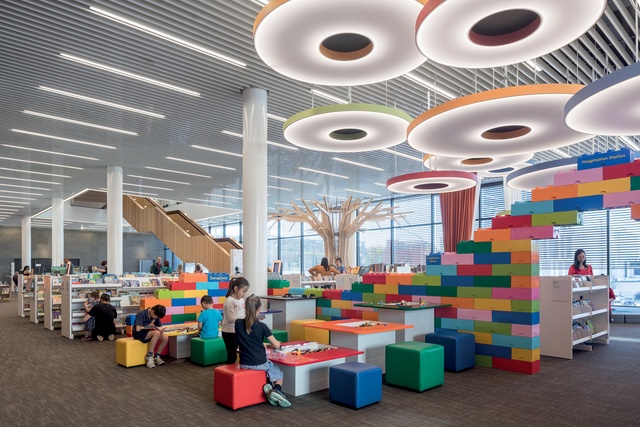
The first floor is dedicated to youth, with an amazing children’s area complete with a climbable castle, glow-worm cave and slide. “The Cloud fittings above the kids’ area are for acoustics and were also an opportunity to make something more interesting and dynamic for that area. We wanted features of a different scale that kids would respond to,” says graduate architect Matthew Holloway, who worked on the project from concept design to opening.
Technology plays a significant part in this new library. On the first floor, 3D printers, laser cutters and a full sound studio are available for public use. In the foyer, huge touchscreens display images from Christchurch’s past.
This was a major project for the library: part of a quest to bring all the resources that are usually back-of-house into the public realm, explains Robertson. “We have about 50,000 digitised items, the entire archive of The Star newspaper and many more gifted to us. We wanted something that enables the presentation and access of these in a 21st-century way so people can add to and access the images easily. People’s old family photos can enrich the story. They might have a box of photos sitting in a corner and they can gift them to us or loan them and we can digitise them. It’s surfacing all sorts of conversations. It’s the story of the city and Banks Peninsula. For Christchurch itself, with so much lost, it’s a wonderful collection of the old buildings and memories.”
For both the architects and the library staff, this is a project that has stirred some emotion.
“For me, it’s the pride and the reaction,” says Rankin. “We were in for two weeks before the opening to make sure we knew how it worked. It was a rarefied atmosphere but, when the customers come in, we heard the the oohs and ahhs and the comments around every corner. Our pride and the pride of the community, what we have for a city that’s lost so much: it’s very cool.”
Auer echoes this sentiment: “To be honest, it was moving to see the ribbon being cut and all the people streaming in to it; to be a part of that was actually quite rare and emotional.”
This article was first published in Interior magazine.


